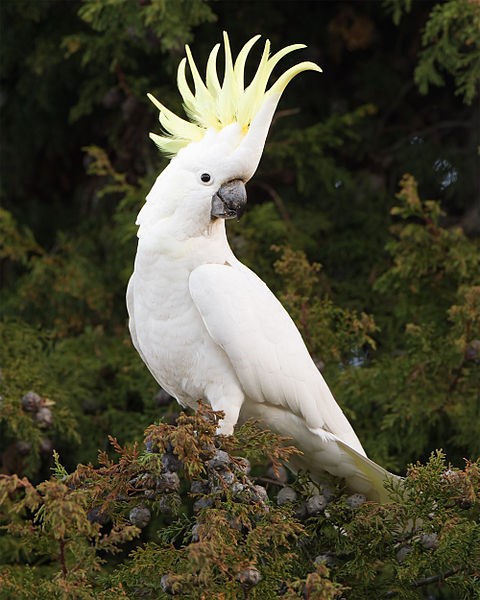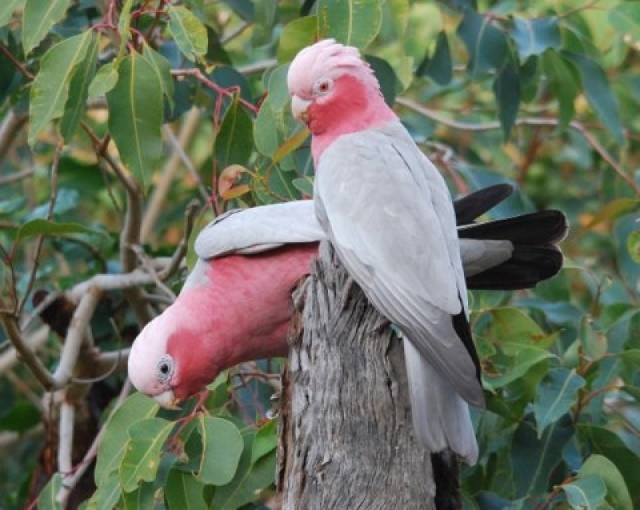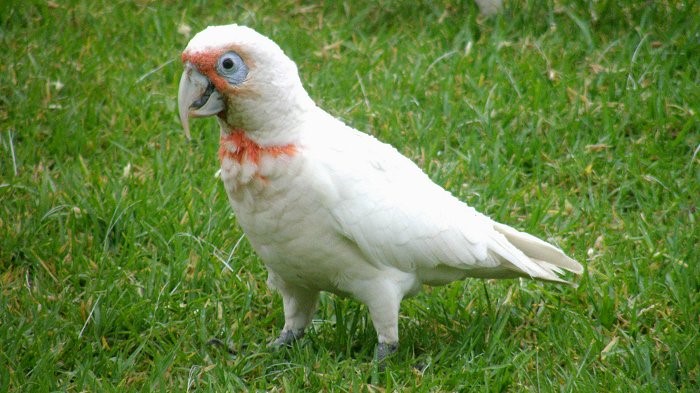Tom Parkinson's monthly column, introducing the diverse range of flora and fauna on show at Sanctuary Lakes.
One of the difficulties in writing a monthly column about nature is that, nature is totally unpredictable. Plants and birds that seem to be popping up everywhere suddenly disappear the moment you finish writing an article on them. Likewise, they will suddenly flower profusely or arrive in an unexpected large flock, just as you are finalising an article on another species which has decided not to turn up or bloom.
For the past two years I have wanted to write about our neighbourhood’s Australian icons, the gregarious, fun-loving Cockatoos, but have been thwarted by the inconsistency of their visiting times. They should start arriving by the middle of this month and a small number of 'scouts' have already been seen. Their nesting and fledging period of 85 days between August and December is over and they have started looking for food in their non-breeding areas. Some species of Cockatoo will choose feeding areas up to thirty kilometres from their roosting sites.
Cockatoos are versatile feeders and consume a range of mainly vegetable food items, all of which are readily and easily available in Sanctuary Lakes. Seeds form a large part of the diet; these are de-husked by their large and powerful bills. Although they feed primarily on the ground, they can also be seen foraging in Sanctuary Lake's Eucalyptus, Ficus, Banksia and Hakea trees for their favourite gumnuts. Inaccessible to many bird species, the big cones can be opened by the strong sharp bills of the Cockatoo. Over half a dozen species of Cockatoo have been observed in Sanctuary Lakes, but our regular visiting Cockatoo flocks are the Galah, Long-billed Corellas and around the Skeleton Creek, Breezewater area, and the Sulphur Crested Cockatoo.
 Sulphur-crested Cockatoo (Cacatua galerita)
Sulphur-crested Cockatoo (Cacatua galerita)
The Sulphur-crested Cockatoo is Australia’s most famous Cockatoo. Their arrival is often heard before being seen, thanks to its very distinctive, loud raucous call, that sounds similar to a long, drawn out screech 'airrrik' or a symphony of broken car alarms. Their plumage is an overall white, with a yellow-tinged underwing and tail. That expressive crest is ‘Sulphur’ yellow. The bill is black, the legs are grey, and a whitish eye-ring encircling almost black eyes. These birds are naturally curious, as well as being very intelligent and social, spending a large part of the day playing, feeding and preening each other. They have adapted very well to European settlement in Australia and live in many urban areas. Sulphur-crested Cockatoos will work together to protect the flock. While feeding, two Cockatoos will keep a lookout for signs of danger from the post of a nearby tree. If danger appears, these Cockatoos will screech loudly as a warning. The word 'cockatoo' has even become an Aussie slang term for someone who keeps guard.
The Sulphur-crested Cockatoo is a seasonal breeder (August to December). The nest is a bed of wood chips in a tree hollow. Two to three eggs are laid and incubation lasts between 25–27 days. Both parents incubate the eggs and raise the chicks. The nestling period is between 9 and 12 weeks, and the young fledglings remain with their parents for a number of months after fledging.
 Galah (Eolophus roseicapilla) Galah originates from the Yuwaalaraay language word ‘gilaa’
Galah (Eolophus roseicapilla) Galah originates from the Yuwaalaraay language word ‘gilaa’
Small Galah flocks are a common sight in Sanctuary Lakes. Whether they are hanging upside-down on a convenient branch, bobbing their heads in a dance or playing footy with pebbles on the ground, you see the reason why 'galah' is Aussie slang for a silly or foolish person. Their call is equally boisterous. A loud high-pitched Chi-Chi sound mixing with a gravely scream. The Galah's chest is bright pink, the wings are light grey and the crest is whitish pink. The bill and feet are bone-coloured. Males have black eyes, the females pink.
Galahs can be seen regularly on the ground feeding off grass seeds and tubers, in the area by the Sanctuary Lakes entrance roundabout, where the North and South Boulevards meet. Male and female Galahs mate for life. Galah pairs return to the same nest site every year and will defend it from other Galahs or animals. Both parents get the nest ready for the eggs by lining it with soft eucalyptus leaves. Galahs like to keep their beaks sharp by chewing on branches. While breeding, they will do most of their chewing on one branch near the nest which is used as a sign to others that this nest is occupied.
The female Galah will lay 4 to 6 eggs in her tree hollow but unfortunately only half will usually survive. However, once the chicks make it to adulthood they will usually live for about 40 plus years in the wild.
 Long-billed Corella (Cacatua tenuirostris)
Long-billed Corella (Cacatua tenuirostris)
A regular visitor to Sanctuary Lakes, the Long-billed Corella is a medium-sized white Cockatoo with a short crest (not always visible), short tail, stocky body and a distinctive long upper bill. Faint yellowish wash on the undersides of its wings and tail; orange-red splashes on its forehead and throat; and an orange-red crescent across its upper breast. Its distinctive eye ring is pale grey-blue. It is a conspicuous and gregarious bird; often seen foraging in small flocks on the Sanctuary Lake Boulevard’s median strips and the Golf Courses fringes or enjoying the gumnuts from the numerous Ficus trees. Like other Cockatoos it announces its presence with a loud, quavering call of two-syllable 'wulluk-wulluk' or 'cadillac-cadillac', combining with a harsh screech.
The Long-billed Corella reaches maturity at three to five years. They form monogamous pairs who breed for life. In the months of July and November, nests are built high in the hollows of old Eucalyptus trees. Clutch size is from one to four eggs and the eggs are incubated for twenty-four days before hatching. Both parents incubate the eggs and feed and care for the chicks. Nesting time is around fifty-six days and both male and female stay close during this time.
Sanctuary Lakes Cockatoos have many common characteristics. They are monogamous, pairing for life, travel in flocks and are playful and gregarious personalities; they have similar, yet distinctive, loud screeching calls, build nests in hollows of old Eucalyptus trees. Live long lives of up to 60 years in the wild. They have successfully adapted to changing human migration, enjoying the benefits for food in grassy parks, backyards and golf courses and have considerably increased their population since the arrival of Europeans. But with urban sprawl and land clearing, the loss of our large old trees is starting to make it hard for them to find permanent nesting sites on the suburban fringes. It would be very sad to see these wonderful Aussie icons disappearing from the neighbourhood.